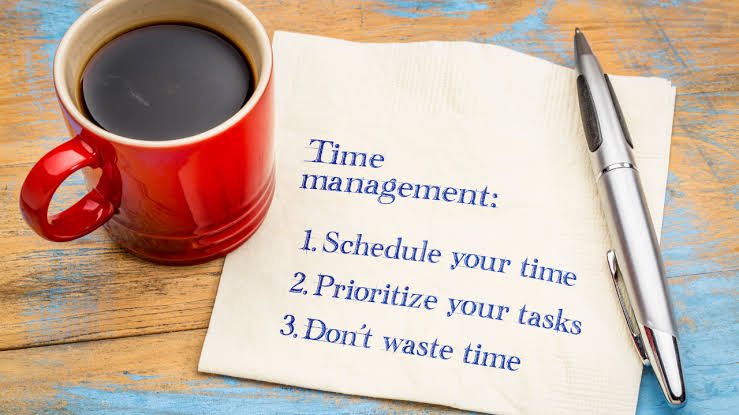In the competitive world of business, effective sales techniques are essential for closing deals and driving growth. Whether you’re a seasoned salesperson or new to the field, understanding and applying proven sales strategies can significantly impact your success. This comprehensive guide explores various sales techniques that can help you close deals more effectively and contribute to the growth of your business.
Understanding the Sales Process – Sales Techniques
Before diving into specific techniques, it’s crucial to understand the sales process. This typically involves several stages, including prospecting, qualifying leads, presenting solutions, handling objections, and closing the deal. Each stage requires different strategies and skills to move potential customers through the sales funnel effectively.
Prospecting
Prospecting is the first stage of the sales process, where you identify potential customers who may have an interest in your product or service. Effective prospecting involves researching and targeting the right audience, using various methods such as cold calling, email outreach, social media, and networking events.
Qualifying Leads
Once you’ve identified potential customers, the next step is to qualify them to determine if they are a good fit for your offering. This involves assessing their needs, budget, decision-making authority, and timeline. Qualifying leads helps ensure that you focus your efforts on prospects who are more likely to convert into paying customers.
Presenting Solutions
In this stage, you present your product or service to the qualified leads. Effective presentations should address the prospect’s specific needs and demonstrate how your offering can solve their problems or improve their situation. Tailoring your pitch to each prospect’s unique circumstances increases the likelihood of a successful outcome.
Handling Objections
Handling objections is a critical skill in sales. Prospects often have concerns or reservations that need to be addressed before they are willing to commit. Understanding common objections and preparing thoughtful responses can help you overcome these barriers and move the sales process forward.
Closing the Deal
Closing the deal is the final stage, where you secure a commitment from the prospect to purchase your product or service. Effective closing techniques involve creating a sense of urgency, providing clear options, and addressing any final concerns to finalize the sale.
Key Sales Techniques for Closing Deals
Build Rapport and Trust
Building rapport and trust with prospects is fundamental to closing deals. Establishing a positive relationship helps create a sense of credibility and reliability, making prospects more comfortable with making a purchase. Techniques for building rapport include active listening, showing genuine interest in the prospect’s needs, and finding common ground.
Understand Your Customer’s Needs
A deep understanding of your customer’s needs is essential for tailoring your pitch and demonstrating the value of your product or service. Conduct thorough research and ask probing questions to uncover the prospect’s pain points, goals, and priorities. This information allows you to present a solution that directly addresses their specific requirements.
Offer Value and Benefits
Focus on the value and benefits that your product or service provides rather than just its features. Prospects are more interested in how your offering can solve their problems or improve their situation. Highlight the tangible benefits, such as cost savings, increased efficiency, or enhanced performance, to make your pitch more compelling.
Use Social Proof
Social proof is a powerful tool for building credibility and persuading prospects to make a purchase. Share testimonials, case studies, and success stories from satisfied customers to demonstrate the effectiveness and reliability of your product or service. Positive feedback from others can help alleviate concerns and reinforce the value of your offering.
Create a Sense of Urgency
Creating a sense of urgency can motivate prospects to make a decision and close the deal more quickly. Use tactics such as limited-time offers, special promotions, or exclusive deals to encourage prospects to act promptly. Be careful not to pressure prospects excessively, as this can backfire and damage the relationship.
Address Objections Proactively
Anticipate and address common objections before they arise. Prepare responses to potential concerns and objections, and incorporate them into your sales pitch. By proactively addressing potential issues, you demonstrate that you understand the prospect’s concerns and are prepared to offer solutions.
Follow Up Consistently
Consistent follow-up is crucial for maintaining engagement and moving prospects through the sales process. After an initial presentation or meeting, follow up with personalized messages to reiterate key points, address any additional questions, and provide further information. Timely follow-ups show that you are attentive and committed to meeting the prospect’s needs.
Strategies for Growing Your Business – Sales Techniques
Focus on Customer Retention
While acquiring new customers is important, retaining existing customers is equally crucial for business growth. Implement strategies to nurture and engage current customers, such as loyalty programs, personalized communications, and exceptional customer service. Satisfied customers are more likely to make repeat purchases and refer others to your business.
Expand Your Market Reach
To grow your business, consider expanding your market reach by exploring new customer segments, geographic regions, or product lines. Conduct market research to identify opportunities for expansion and tailor your marketing and sales efforts to target these new segments effectively.
Invest in Marketing and Branding
Effective marketing and branding strategies play a significant role in driving business growth. Develop a strong brand identity and invest in marketing campaigns that resonate with your target audience. Utilize various channels, such as digital marketing, social media, and traditional advertising, to increase your visibility and attract new customers.
Leverage Technology and Data
Technology and data can provide valuable insights and tools for optimizing your sales and growth strategies. Use customer relationship management (CRM) systems, analytics tools, and marketing automation platforms to track performance, analyze customer behavior, and streamline your sales processes. Data-driven decisions can enhance your sales efforts and contribute to overall business growth.
Foster a Positive Sales Culture
A positive sales culture can drive motivation, performance, and success within your sales team. Encourage collaboration, recognize achievements, and provide ongoing training and support to help your team develop their skills and stay motivated. A supportive and high-performing sales culture can lead to better results and contribute to the growth of your business.
Conclusion – Sales Techniques
Mastering sales techniques and implementing effective strategies are essential for closing deals and driving business growth. By building rapport, understanding customer needs, offering value, and addressing objections, you can enhance your sales efforts and increase your success rate.
Additionally, focusing on Sales Techniques like customer retention, expanding your market reach, investing in marketing, leveraging technology, and fostering a positive sales culture can contribute to sustained business growth. With a comprehensive approach and a commitment to continuous improvement, you can achieve significant results and thrive in a competitive business environment.



Can you be more specific about the content of your article? After reading it, I still have some doubts. Hope you can help me.